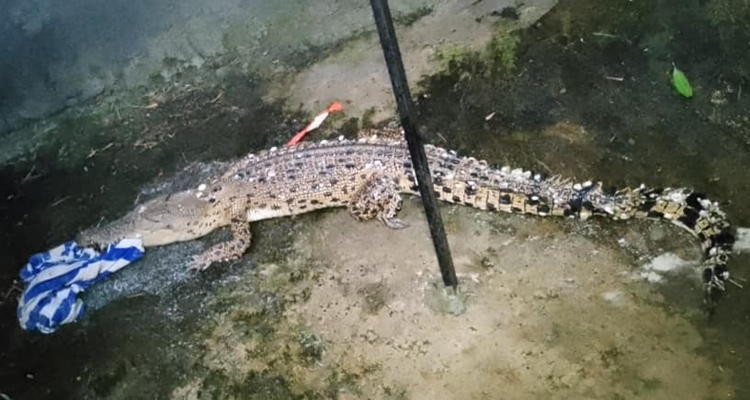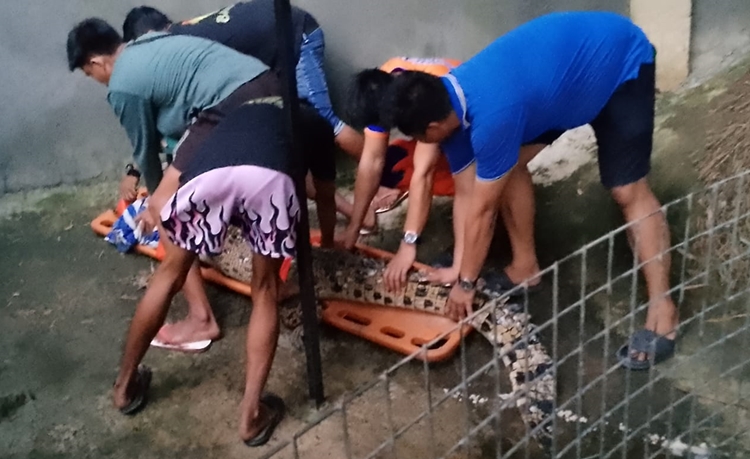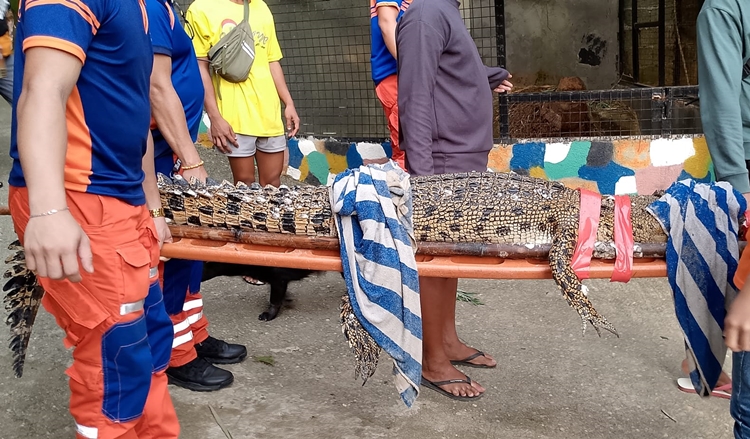In Boracay, a Saltwater Crocodile Was Caught on a Beach
BORACAY – A saltwater crocodile was caught on the island’s Sinagpa Beach at Station 1 on Thursday, July 25.
The saltwater crocodile (Crocodylus porosus) is the largest living reptile, with males reaching up to 7 meters (23 feet) in length and over 1,000 kilograms (2,200 pounds). They inhabit rivers, estuaries, coastal waters, and mangrove swamps across Southeast Asia, Northern Australia, and the eastern coast of India. These apex predators have a diverse diet, including fish, birds, mammals, and other crocodiles.
Known for their territorial and aggressive nature, especially during the breeding season, they are excellent swimmers capable of long-distance travel in the sea. Saltwater crocodiles can live up to 70-100 years in the wild. Females lay eggs in nests of vegetation and mud, with the temperature determining the gender of the offspring. While not endangered, they face threats from habitat destruction and illegal hunting, though conservation efforts have stabilized their populations in some regions. They are commonly referred to as “salties” in Australia.

Speaking of which, a saltwater crocodile was found on Boracay’s Sinagpa Beach at Station 1 on Thursday morning. The Philippine Coast Guard rescued it around 3 p.m. and handed it over to a Department of Environmental and Natural Resources shelter in Malay. The report suggested the crocodile might have gotten lost, as it is not native to Boracay.

Meanwhile, Boracay is a small island renowned for its stunning white-sand beaches, crystal-clear waters, and vibrant nightlife. It is part of the Western Visayas region and belongs to the province of Aklan. Boracay’s most famous beach is White Beach, a long stretch of fine sand lined with resorts, restaurants, bars, and shops. The island is a popular tourist destination known for activities such as snorkeling, scuba diving, windsurfing, and kiteboarding.

